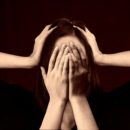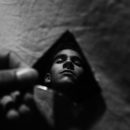OCD & Checking: Part 2 (Mental Checking)
Behavioral Checking (Overt Checking) Many examples of compulsive checking rituals in OCD involve direct inspection of a target stimulus by sight, sound, or feel. Common OCD checking behaviors include relocking doors, visually examining the position of one’s parking brake, or holding one’s hands above stove burners in order to detect warmth. Behavioral checking is often accompanied by the thought, “Did I do it the right way?” These checking behaviors are often referred to as behavioral checks, manual checks, or overt checks. Overt rituals (by definition) are visible behaviors that can be perceived by external observers. However, in some cases, overt rituals may be subtle or purposefully hidden in order to avoid embarrassment. Mental Checking (Covert Checking) In contrast, other compulsive checking rituals can only be perceived by the individual engaging in the behavior. These types of OCD rituals are...
Read MoreChecking & OCD: Part 1 (Checking for Safety)
Compulsive checking often begins innocently enough. One check here, two checks there… But OCD’s greed knows no bounds. What starts out as a simple check “just to make sure” eventually spirals into disabling OCD doubt that can come to predominate innumerable situations and scenarios. Checking behaviors often emerge in situations in which “being irresponsible” might result in catastrophic outcomes, guilt, anxiety, or regret. OCD-related checking is usually driven by a need to obtain absolute certainty that nothing bad will happen. Compulsive checking is typically harder to control in “high stakes” scenarios and in situations in which you perceive that you have personal responsibility for the outcome. Unfortunately, at least some degree of personal responsibility is present in most situations. Moreover, many people with OCD often feel that safety is tenuous or that disasters are lurking just one mistake away....
Read MoreBody Dysmorphic Disorder (BDD) Symptoms
Symptoms of Body Dysmorphic Disorder (BDD) Body dysmorphic disorder (BDD) is a somatoform disorder that closely resembles obsessive-compulsive disorder (OCD). Symptoms of body dysmorphic disorder include excessive concern about perceived physical flaws, defects, or imperfections. Individuals with body dysmorphic disorder become obsessed with these unwanted aspects of their appearance and perform a variety of rituals and avoidance behaviors in order to disguise or conceal these “flaws.” BDD symptoms typically result in extreme distress and a variety of social and occupational difficulties. Body dysmorphic disorder symptom areas vary between individuals and commonly focus on the skin, hair, weight, and specific facial features, such as the nose (Philips, 2005). In The Broken Mirror (2005), Dr. Philips breaks down the frequency of different types of BDD concerns: Skin 73% Genitals 8% Hair 56% Cheeks/cheekbones 8% Weight 55% Calves 8% Nose 37% Height...
Read MoreBody Dysmorphic Disorder (BDD)
What is Body Dysmorphic Disorder (BDD)? Body dysmorphic disorder (BDD) is not formally classified as an anxiety disorder; however, it shares many overlapping features with anxiety disorders like obsessive-compulsive disorder (OCD). In contrast to OCD which typically focuses on specific external feared outcomes, body dysmorphic disorder involves hyper-attention to one or more perceived bodily defects, imperfections, or flaws. BDD “flaws” are experienced as distressing and intolerable. In some cases, the imperfections that bother individuals with body dysmorphic disorder can be perceived by other people, but BDD magnifies and distorts these imperfections in the eyes of the sufferer. In other cases, individuals with BDD notice and attend to “flaws” that cannot be readily perceived by others. Regardless of the form of one’s symptoms, body dysmorphic disorder is associated with extreme distress and shame. Moreover, because BDD-related “flaws” are often perceived as being...
Read MoreHit-and-Run OCD
“Hit and run” OCD involves the fear of accidentally hitting a pedestrian while driving. In most cases of hit-and-run obsessive-compulsive disorder, fears focus on unintentionally killing, injuring, or maiming a victim. Other individuals worry about causing car accidents or causing other vehicles to swerve and hit pedestrians. Fear of Driving Hit-and-run OCD, or motor vehicle accident OCD, is distinct from other syndromes that involve anxiety about driving or the fear of car accidents. Hit and run OCD differs from panic– or agoraphobia-related driving avoidance, in which individuals fear driving due to the possibility of having a panic attack while in the car. Diagnosis of hit and run OCD is slightly more complicated in cases in which one fears “losing control” while driving, as this symptom can reflect either panic or OCD. In the case of panic, this fear is...
Read More







